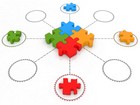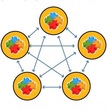Dec 30, 2016
The Engagement Formation Ensemble (v. #2)
Engagement Formation
Personality Spectrum Filter;
Example - Bipolarization

Select the section
that interests you.
A Note to Diana Collins Main Page ← You are here Author's Note Preface Introduction The Big Picture Summary Articles:
Article 1Multiple Filters in Play Issues
Moving Forward
Offered by David Apollo
Author's Note
A Peek at the Note to Diana"That which is absolutely True is often not considered by many to be as Real as it actually is." - David Apollo![[ cat lion picture ]](../filters/images/cat-to-lion-image_cr340_255.jpg)
This is Version 1 of the chapter discussing the Engagement Formation Personality Spectrum Ensemble.
It is currently offered "as is" in order to get introductory information out to the ConserveLiberty audience for their review. Subsequent revisions may include additional material that support sections of this chapter more completely.
→ The Author's Note was last updated 29 Dec 2016 12:00 PST ←
Well, I guess I'm on a roll now. Among the Filters I wanted to start developing within ConserveLiberty with more of a molecular biology focus, I've now posted the initial versions of two.Preface
So, what's #3 in that series?
Mania and Depression are perhaps extreme examples on an ensembled trait scale that when more moderated unfold as what we might more normally think about as "Motivated" or "Not Motivated". "Engaged" or "Withdrawn." "Energized" or "Lethargic." And all sorts of stuff on either side and in between.
Click here to go to the full note.
We start each Personality Spectrum Filter discussion by reminding the reader what ConserveLiberty means by a Personality Filter. ← Click there.
Now that the declaration that "our personality filters have an organic, genetic basis" is out of the way ... it is also important to keep in mind that since authors are endowed with their own foundational filters, these posts are always written from an unavoidable perspective and expression personality bias.
Finally, we continue to remind that ...
The biological and genetic basis underlying human personality is expected to be quite complex, with many component parts. By no means should it be construed or implied that the Engagement Formation Personality Spectrum Ensemble is the result of a single gene. Rather, an ensemble of biological parts are necessary to be expressed and put together just right so that a person's individual place on the Engagement Formation Ensemble is determined.In fact, with regard to the Engagement Formation Ensemble it is probably a bit more clarifying to reiterate the statements above in a more declarative manner:![[ gauges pictures ]](../addenda/images/kpisintro.png)
Each of the components within the ensemble are subject to variation among individuals, as all genes are. Thus, on a population scale, individuals can be found all along the "scale" from 0 (zero) to 100 (one hundred), regarding the collective "setting" for this Engagement Formation Ensemble for each individual.
In fact, the "setting" for the Engagement Formation Ensemble is itself determined by the collective settings for the Filters that make it up and how those settings impact the way in which they integrate with each other. And of course, if these component Filters are themselves ensembles of individual components that make them up, then the Filter settings themselves are determined by the collective settings of the individual components that make them up. And so on if relevant.

Filter as ensemble of
components

Ensemble as ensemble
of filters
For the purpose of illustration, we will simply assert that a setting of 65 confers a perfect ability to Engage. And, a setting of 0 confers a perfect inability to Engage, resulting in an overriding tendency to Withdraw.
And now we come to a most interesting inference. Assuming that:... then it follows that we will find people all along the spectrum, having default settings from 0 to 100.
- the Engagement Formation Personality Spectrum Ensemble is ultimately organic in nature and thus generated genetically, and
- there are variations from one person to the next among the individual components that ultimately compose the Engagement Formation Ensemble
Since this ensemble is not yet worked out,Thus we anticipate that in a large population what we may actually find will be Engagement Formation Ensembles with default settings between approximately 15 to 85.
- it is possible that we may find that getting to the extreme settings of 0 or 100 might lead to lethal results, and/or
- a perfect setting of 65, which would result from perfectly aligned settings between all the ensembled components, while possible would also be extremely rare from a statistical consideration.
Let's also postulate that a relatively flexible ability to purposefully modulate between Engagement and Withdrawal exists within default settings of 30 - 60. Best if somewhere midway, less as we get closer to the extremes in either direction.![[ female bipolar picture ]](../filters/images/bipolardisorder_female_recr_300.jpg)
![[ male bipolar picture ]](../filters/images/bipolardisorder_male_recr_300_200_ed.jpg)
Continuing, at some point, as the default setting becomes lower, the inability to purposefully modulate between Engagement and Withdrawal becomes an issue. And, it becomes an issue well before ALL ability to productively manage (elect, based on consideration of situational objectives) Engagement and Withdrawal is absent. So, lets just throw out a number, and assert that once the setting for the Engagement Formation Ensemble becomes less than 25, then the ability to purposefully modulate between Engagement and Withdrawal is so compromised that a purposeful decision to switch from Withdrawal to Engagement is very difficult or no longer possible to make, and a clinical diagnosis of Depression can be made.
Likewise, once the setting for the Engagement Formation Ensemble becomes greater than 75, then the ability to regulate between Engagement and Withdrawal is so compromised that a purposeful decision to switch from Engagement to Withdrawal is very difficult or no longer possible to make, and a clinical diagnosis of Mania or Hypomania can be made.
For those whose ensemble settings (which are themselves somewhat variable in order to allow for situational adjustments) are exceptionally "noisy", ranging from above 75 to below 25 within an oscillation period of days or weeks, a diagnosis of Bipolar Disorder is made.
To summarize (a drawing or table would be useful and welcome here), at approximate settings (hypothesized, for illustration only) of:At any time, when interacting with a sufficiently large and randomly selected group of people:
- 0-15: Unable to purposefully modulate, severely Withdrawn. Diagnosed Depression
- 16-25: Unable to purposefully modulate, predominantly Withdrawn. Diagnosed Depression
- 26-40: Able to purposefully modulate between somewhat Withdrawn and somewhat Engaged. Considered "normal", but perhaps a bit shy, quiet, comfortable.
- 41-55: Able to purposefully modulate between Withdrawn and Engaged. Considered "normal", but sociable, enjoyable to be around, inclusive, interesting.
- 56-65: Able to purposefully modulate between slightly Withdrawn and significantly Engaged. Considered "normal", but fun, a leader, engaging, charismatic.
- 66-80: Unable to purposefully modulate, predominantly Engaged, highly energized. Diagnosed Hypomanic
- 81-90: Unable to purposefully modulate, severely Energized. Diagnosed Manic.
- 91-100: Unable to purposefully modulate, severely Energized. Diagnosed Manic, with numerous additional psychotic descriptors, such as hallucinations, delusions, disorganized thinking, etc.
In other words, any of us may be, in one way or another, a little bit (or more) moody in ways that are not entirely within our purposeful control. And, when that understanding is made, it is often made with feelings of defensiveness, or, if understood, anxiety.
- We will interact with many who do quite well purposefully modulating between Engagement and Withdrawal.
- Others that we interact with have not be able to regulate as well, but they do well enough that they are generally agreeable. They and their friends find themselves normal. Perhaps we think of them as a little more moody than others, challenging in an interesting sort of way.
- There are others who don't do so well, on average, purposefully managing their moods. They still may generally be tolerable to us. They believe themselves to be reasonable, justified. We may find them to be "high maintenance".
- Finally there are those that pretty much are in different moods on different days, sometimes much more than positive and engaging (thus, manic) and other times much more than simple sadness or moderately withdrawn (thus, depression). These moods may not often be predictable based on the events that have been taking place that day or the days before. At some point these individuals may be diagnosed with bipolar disorder after a visit to a credible psychologist.
While it is important to Conserve Liberty, at some point liberty may need to be restricted if the risk of unnecessary harm to self or others becomes too high.
→ The Preface was last updated 30 Dec 2016 12:00 PST ←
Back to the Table of Contents Next - Introduction →
Consider thoughtfully.
filters/20161214_examplebio_bipolar.php